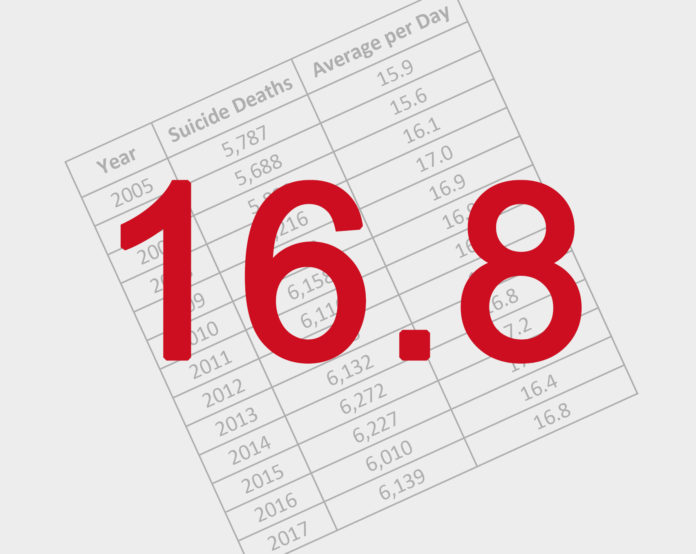The Department of Veterans Affairs has changed the way they report the average number of daily veteran suicides in the recently released 2019 National Veteran Suicide Prevention Annual Report.
Using information from the most current year, 2017, the new report separates the data collected from three different groups that were previously used to determine the veteran suicide rate.
“Based upon discussions with our colleagues in the Department of Defense, this report moves away from an approach that previously grouped together current service members, and former Guard and Reserve members who were never fully activated, and veterans eligible for care and services from the VA,” Veterans Health Administration Executive in Charge Dr. Richard Stone said.
In a news release from the VA it stated that the change was needed because the groups are unique and do not all qualify for the same services and benefits, therefore the outreach requires different strategies.
Once separated and counting only veteran suicides in this year’s report, the average number of veteran suicides a day for 2017 is 16.8, two tenths higher than the daily average since 2005.
In total there were 6,139 veteran suicides in 2017, which was 129 more than the previous year and marked a 2 percent rate increase from 25.7 to 27.7 per 100,000 suicide deaths after adjusting for age and sex.
Veterans between the ages of 55 to 74 had the highest overall count of suicides and veterans between 18 to 34 had the highest percentage of suicides
The suicide rate for female veterans was 2.2 times higher and males were 1.2 times higher than non-veterans. Overall, veteran suicides were 1.5 times the rate for their non-veteran counterparts.
Firearms were the method of suicide for 69.4 percent of veterans followed by suffocation at 28.7 percent, poisoning at 9.9 percent and other at 5 percent.
Every year since 2005 the suicide rate from veterans who had previously sought out VHA care increased. However, in 2017 the rate increase of 1.3 percent is slower compared to the rate increase of 11.8 percent of those who didn’t seek help.
According to the VA, the difference “suggests that our world-class health care and engagement are making a difference.” Of the 17 daily veteran suicide deaths a day, six of them had a VHA encounter prior to death and 11 of them did not.
“VA is working to prevent suicide among all veterans, whether they are enrolled in VA health care or not,” VA Secretary Robert Wilkie said. “That’s why our department has adopted a comprehensive public health approach to suicide prevention, using bundled strategies that cut across various sectors . . . to reach veterans where they live and thrive.”
For the veterans who died from suicide and recently used VHA services, 58.7 percent had been diagnosed with a mental health or substance abuse disorder in 2016 or 2017 and of those, patients who had been diagnosed with bipolar disorder or opioid use disorder had the highest suicide rate.
Along with the 6,139 veteran suicides in 2017, the report states that there were 919 suicides among former National Guard and Reserve members. Information about active duty personnel suicide can be found in the Department of Defense Suicide Event Report.


















